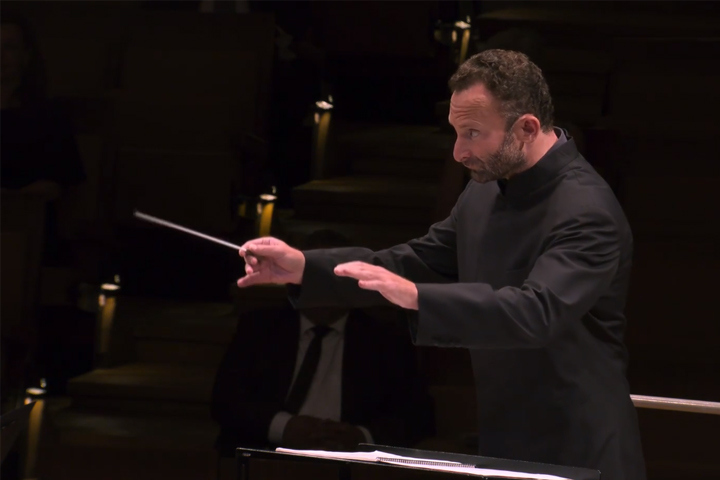conductor: Kirill Petrenko
Program:
Arnold Schoenberg
Verklärte Nacht (Version for string orchestra from 1943)
Johannes Brahms
Symphony No. 4 in E minor, op. 98

Kirill Petrenko, chief conductor of the Berliner Philharmoniker, opens the 2020/21 concert season with a programme that combines two cross-seasonal focal points of his work with the orchestra: the cultivation of the Classical-Romantic core repertoire with Johannes Brahms’s melancholy, profound Fourth Symphony, and the music of composers of the Second Viennese School with Verklärte Nacht, a youthful work by Arnold Schoenberg that is still entirely in the tradition of late Romanticism. It was inspired by a poem by Richard Dehmel, which is a homage to free love.
Review:
Influenced by the pandemic, the classical music world experienced a hiatus in the first half of 2020. Orchestras sought ways to play on in some way, but nothing can replace the in-person concerts. For Berliner Philharmoniker, one of the best orchestras around the world, that came back towards the end of summer, despite in a slightly different environment. Two players no longer share the same stand, and the audience are sitting apart from each other. Nevertheless, concerts are back in Europe. Of course, I could not experience the concert in person, but the Digital Concert Hall developed by the orchestra enabled people around the world to witness it.
Maestro Petrenko chose again a very classic piece for the season opening concert: after Beethoven’s symphonies, this time it is the 4th Symphony of Brahms. This is a daring choice, since it has been performed so many times by the same orchestra. Nevertheless, Petrenko gave us a still compelling performance of it despite all the factors.
Petrenko’s interpretation is noticeably faster than many of his predecessors. While in some cases this can lead to a loss of details, Petrenko still kept a good balance between the speed and the intricacies. With the faster tempo, the symphony starts with a more austere tone. The inner momentum is more stressed than the local melodies. This aligns well with Brahms’ introspective music. In the Andante, the melodies are beautifully brought out, while at the same time, the Philharmoniker keeps the flow and reminds us of the forward momentum and the tension. The third scherzo-like movement is a little bit too fast, sometimes evoking the sense of being rushed (the same thing happens in other movements, although not so much). But when it comes to the finale, Petrenko produced a thrilling passacaglia. It flows continuous from the starting theme to the final variation, combining the lyrical part of Brahms, his solitude, as well as the determined Brahms all together. In all, Petrenko brought us a fairly unique interpretation of Brahms, much faster, yet still poignant in his way.


sikis izle
I love your writing style genuinely enjoying this web site. Onida Shep Abell
bluray
You made some clear points there. I did a search on the subject and found most guys will go along with with your blog. Martica William Cusick
ucretsiz
There is certainly a great deal to learn about this issue. I really like all the points you have made. Siobhan Ryley Laidlaw
web-dl
Superb, what a blog it is! This weblog provides useful facts to us, keep it up. Griselda Vachel Bolen
Rdv
Thanks so much for the article post. Thanks Again. Keep writing. Lida Rriocard Collen